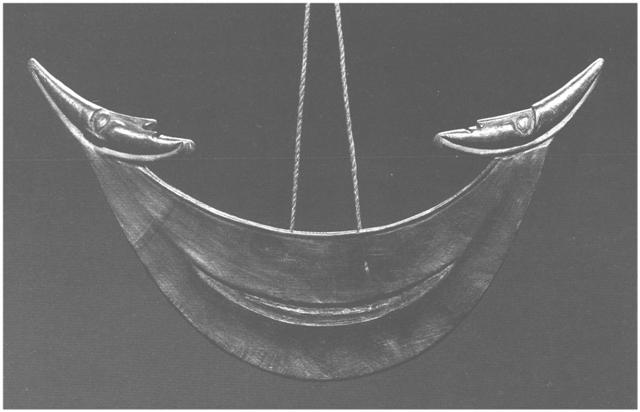2. When the explorers under the command of Ira ('looking around') sailed away from the old homeland there were 8 who stayed behind with Hau Maka (he noho a Hau maka):
The 8th of them was Ruhi. This name recurs later in Manuscript E, in rather strange circumstances when Ira is hiding a mother-of-pearl ornament (reipa) within a hole he had drilled in a stone: It grew light, and again Ira spoke. This is what he said: 'Turn around, all of you, and go down to ride the waves (literally, 'to the turtle, to act like a turtle').' Five of them went down; only Ira did not go down to let himself be carried on a board by a wave. After the young kinsmen had gone down to surf, Ira got up, picked up the mat with the treasure, unfolded the mat, pulled out the mother-of-pearl ornament (reipa), folded the mat again tightly, and left it on the ground. Ira got up, climbed up, went on, and reached Ruhi Hepii. He drilled a hole into the stone. After the hole was deep enough, he took the ornament (rei) and put it into the hole so that the shiny side (rapa) was turned outward. He gave the place the name 'Ruhi Hepii'. (Manuscript E p 34.) One of my glyph types is named Rei (with a capital letter as in Rogo):
The glyph type Rei could be a picture of a type of wooden pectoral (rei miro), which maybe only kings were allowed to wear. Rei miro were not standardized in design and two pictures (from Thor Heyerdahl's The Art of Easter Island) will serve to illustrate this fact:
The first of them has only one face, but the second has two. We can easily identify Sun in the first example and Moon in the second. Both have 'smiles' engraved on their bodies, with that of Sun a little thicker. Furthermore, in the Moon version there are 2 'lips'. The 'cup' form (È) identifies rei miro pectorals as belonging on the back side, where Sun is not to be seen. No rei miro is formed, as far as I know, like a 'cap' (Ç) - and who would like to have a dead fish hanging upon his chest? On the back side you must travel inside a canoe, otherwise you are dead for real and will not be reborn. Thus the rei miro 'fishes' probably represent such canoes. Cats have 9 lives which explains the smile of the Cheshire Cat. Also the Sun God at Tiahuanaco has a fish on his chest:
I have reversed the picture in order to get the head of the fish to the right. The daytime face of Sun is above and his nighttime canoe is sailing below. |



